Nootropics That Promote Calm and Rest
🌙 Introduction: The Overstimulated Mind
In a world obsessed with productivity, it’s easy to forget that mental recovery is just as important as mental performance.
Caffeine, deadlines, stress, and endless notifications keep our brains in a constant state of alertness. Even when our bodies stop moving, our minds keep racing — replaying the day, worrying about tomorrow, or analyzing everything we “should” have done differently.
That’s where calming nootropics come in. 🌿
While nootropics are often marketed for focus, memory, and energy, there’s a whole category designed to enhance calm, emotional balance, and quality sleep — without sedation or cognitive dullness.
These are compounds that nourish the brain, balance neurotransmitters, and gently nudge your nervous system from “fight-or-flight” into “rest-and-digest.”
In this guide, you’ll discover the best nootropics for calm and rest, how they work, how to combine them safely, and how to build a nighttime stack that supports both clarity and recovery.
🧬 Part 1: What Are Calming Nootropics?

Nootropics are compounds — natural or synthetic — that enhance cognitive function. But not all nootropics are stimulants.
Some are “adaptogenic” (help your body adapt to stress), while others are “neuroprotective” (protect your brain from overactivation or oxidative damage).
The goal of calming nootropics isn’t to make you tired — it’s to help your brain shift gears efficiently:
Focus sharply when needed.
Unwind smoothly when it’s time to rest.
You can think of them as “neural balancers.”
They support neurotransmitters like GABA, serotonin, and acetylcholine, which regulate mood and sleep. They also improve blood flow, oxygenation, and nutrient delivery to the brain — all essential for mental recovery.
⚖️ Part 2: The Neurochemistry of Calm
To understand how calming nootropics work, you need to know the key players in your brain’s relaxation chemistry:
🧘♀️ GABA (Gamma-Aminobutyric Acid)
Your brain’s primary inhibitory neurotransmitter.
When GABA levels are healthy, thoughts slow, muscles relax, and anxiety decreases.
Low GABA = racing thoughts, restlessness, and insomnia.
🌤️ Serotonin
The mood stabilizer. Serotonin helps regulate emotion, digestion, and melatonin production (your sleep hormone).
Low serotonin = anxiety, irritability, and disrupted sleep-wake cycles.
💖 Acetylcholine
Important for memory and REM sleep. While too much can overstimulate, the right balance promotes dream quality and mental restoration.
🔥 Cortisol
Your stress hormone. It’s useful in the morning but disastrous at midnight. Calming nootropics help bring cortisol down naturally.
🌿 Part 3: Top Nootropics That Promote Calm and Rest
Now let’s explore the most effective, well-researched compounds that support calmness, sleep quality, and emotional balance.
🍵 1️⃣ L-Theanine: The Mindful Molecule
Source: Green tea (Camellia sinensis)
How it works:
L-Theanine promotes alpha brain waves — the same ones associated with meditation and relaxed creativity. It increases GABA, serotonin, and dopamine, creating a unique calm-alert state.
Benefits:
Reduces anxiety without sedation 🧘
Improves sleep quality when taken before bed
Smooths out caffeine’s jitters (great for daytime balance)
Dosage: 200–400 mg 30–60 minutes before bed (or with morning coffee for calm focus).
Stack synergy: Combine with magnesium glycinate or ashwagandha for deeper calm.
🧂 2️⃣ Magnesium Glycinate or Threonate
The body’s relaxation mineral.
Magnesium is essential for nervous system balance, GABA activity, and melatonin production.
Benefits:
Relaxes muscles and reduces restlessness
Regulates stress hormones like cortisol
Improves sleep depth and duration
Best forms:
Glycinate — gentle and calming
Threonate — crosses the blood-brain barrier to support cognition
Dosage: 200–400 mg before bed.
Stack synergy: Works beautifully with L-Theanine, GABA, and glycine.
🌾 3️⃣ Ashwagandha (Withania somnifera)
An adaptogenic herb used in Ayurveda for over 3,000 years.
How it works:
Ashwagandha reduces cortisol, balances the hypothalamic-pituitary-adrenal (HPA) axis, and improves resilience to chronic stress.
Benefits:
Calms the nervous system
Enhances sleep quality and REM balance
Reduces anxiety and promotes steady energy
Dosage: 300–600 mg standardized extract (KSM-66® or Sensoril®).
Stack synergy: Combine with magnesium and L-Theanine for a complete stress-reduction formula.
🌺 4️⃣ Rhodiola Rosea
A Scandinavian adaptogen known for its ability to balance stress and energy.
Unlike ashwagandha (which is sedating), Rhodiola is regulating—it can calm you when stressed and energize you when fatigued.
Benefits:
Reduces anxiety and cortisol
Improves mood and mental endurance
Helps prevent burnout and overtraining fatigue
Dosage: 200–400 mg standardized extract (3% rosavins, 1% salidroside).
Best time to take: Morning or early afternoon (not right before bed).
🌸 5️⃣ GABA (Gamma-Aminobutyric Acid)
The body’s natural “off switch.”
Supplemental GABA may not cross the blood-brain barrier easily, but newer forms like PharmaGABA® appear to have some effect.
Benefits:
Helps calm overactive thoughts
Reduces muscle tension and heart rate before bed
Enhances alpha brain waves
Dosage: 100–200 mg before sleep.
Stack synergy: Pair with L-Theanine and magnesium for maximum GABAergic support.
🌿 6️⃣ Lemon Balm (Melissa officinalis)
A gentle herb from the mint family that enhances GABA activity and soothes digestion.
Benefits:
Reduces anxiety and insomnia
Relieves tension headaches
Promotes relaxation without grogginess
Dosage: 300–600 mg extract or tea before bed.
Bonus: Lemon balm combines beautifully with valerian or chamomile.
🪶 7️⃣ Glycine
A simple amino acid that acts as a neurotransmitter to promote relaxation and reduce body temperature — key for initiating sleep.
Benefits:
Shortens sleep onset
Improves sleep quality and reduces fatigue
Supports muscle repair during rest
Dosage: 2–3 grams 30–60 minutes before bed.
Stack synergy: Pairs well with magnesium and L-Theanine.
🌼 8️⃣ Valerian Root
A traditional herbal sedative used for centuries in Europe.
Mechanism:
Valerenic acid enhances GABA signaling and slows the breakdown of neurotransmitters involved in sleep regulation.
Benefits:
Helps you fall asleep faster
Reduces nighttime awakenings
Supports deeper, more restorative sleep
Dosage: 400–900 mg root extract.
Note: Works best after consistent use for 1–2 weeks.
🌙 9️⃣ L-Tryptophan & 5-HTP
These amino acids are precursors to serotonin and melatonin — your mood and sleep hormones.
Benefits:
Improves mood stability
Increases melatonin production naturally
Aids sleep onset
Dosage:
L-Tryptophan: 500–1000 mg
5-HTP: 50–100 mg (avoid with SSRIs or antidepressants)
Stack synergy: Combine with magnesium and vitamin B6 to enhance conversion into serotonin.
🌸 🔟 Bacopa Monnieri
A nootropic herb famous for improving memory and reducing anxiety.
How it works:
Bacopa modulates serotonin and GABA, and helps buffer the body against chronic stress.
Benefits:
Reduces restlessness and anxious thoughts
Enhances REM sleep and dream quality
Improves long-term memory and focus
Dosage: 300 mg standardized extract (50% bacosides).
Best time to take: Morning or midday (it builds effects gradually over weeks).
🧘 Part 4: Synergistic Nootropic Stacks for Calm and Rest

You can combine certain compounds to create your own nootropic sleep stack—safe, effective, and fully natural.
🌜 1️⃣ The “Calm Mind, Relaxed Body” Stack
Perfect for people who feel wired but tired.
Stack:
L-Theanine (200 mg)
Magnesium Glycinate (300 mg)
Ashwagandha (300 mg)
Benefits:
Eases mental tension
Balances cortisol
Promotes peaceful sleep without sedation
🌙 2️⃣ The “Deep Sleep Restorer” Stack
Ideal for those who fall asleep but wake up often.
Stack:
Glycine (3 g)
GABA (200 mg)
Valerian Root (500 mg)
Chamomile or Lemon Balm tea
Benefits:
Enhances GABA signaling
Relaxes body temperature
Increases slow-wave (deep) sleep
🌅 3️⃣ The “Morning Calm & Focus” Stack
For people who want a relaxed yet productive mindset during the day.
Stack:
L-Theanine (100 mg)
Rhodiola Rosea (200 mg)
Bacopa Monnieri (300 mg)
Benefits:
Reduces stress-induced fatigue
Enhances focus and mood
Promotes calm alertness
🌬️ Part 5: How to Optimize Results
🕯️ 1️⃣ Support the Parasympathetic System
Combine your nootropics with:
4-7-8 breathing (inhale 4, hold 7, exhale 8)
Gentle stretching or yin yoga
Warm bath with Epsom salts
This boosts GABA activity and signals safety to your nervous system.
🧘 2️⃣ Keep a Consistent Bedtime
Nootropics work best with circadian rhythm stability. Aim for the same sleep and wake time daily.
📵 3️⃣ Reduce Evening Stimulation
No caffeine after 2 p.m.
Dim lights 1 hour before bed.
Replace doomscrolling with reading or gratitude journaling.
🧂 4️⃣ Eat Mineral-Rich Foods
Natural sources of calming nutrients:
Magnesium → pumpkin seeds, spinach, almonds
Tryptophan → turkey, oats, banana
GABA → fermented foods like kimchi or yogurt
💬 Part 6: Common Questions
❓Will calming nootropics make me drowsy during the day?
Not if dosed correctly. They calm without sedating, helping you stay relaxed yet focused.
❓Can I combine them with caffeine?
Yes — L-Theanine pairs well with caffeine to reduce jitters and crash.
For sleep-oriented stacks, however, avoid caffeine after lunch.
❓How long before I notice results?
L-Theanine and Magnesium: immediate effect (30–60 min)
Ashwagandha, Bacopa: 2–3 weeks for cumulative balance
Valerian: 1–2 weeks consistent use
❓Are they safe long-term?
Yes, most natural nootropics are safe with periodic breaks. Cycle every few months to maintain sensitivity.
🧭 Part 7: Sample Nighttime Routine
| Time | Habit | Supplement | Why It Works |
|---|---|---|---|
| 8:30 PM | Dim lights, stop screens | — | Lower cortisol, increase melatonin |
| 9:00 PM | Take stack | L-Theanine + Magnesium + Glycine | Calm mind & relax muscles |
| 9:15 PM | Tea & journaling | Chamomile / Lemon Balm | Emotional decompression |
| 9:30 PM | Breathwork | — | Activates parasympathetic state |
| 10:00 PM | Sleep | — | Deep rest & recovery |
Repeat this routine for at least 10–14 days to reprogram your sleep-wake rhythm. 🌙
🌈 Part 8: The Deeper Benefit — Rewiring Stress
Calming nootropics don’t just help you sleep — they help you unlearn chronic tension.
When your brain experiences safety, night after night, your nervous system slowly reprograms its baseline. You wake up calmer, your thoughts less reactive, your body more grounded.
That’s the real transformation:
not just better sleep, but a better relationship with rest itself. 🧘💫
📚 References
Kimura, K. et al. “L-Theanine Reduces Psychological and Physiological Stress Responses.” Biological Psychology, 2007.
Peuhkuri, K. et al. “Diet and Sleep: Magnesium’s Role in Human Sleep Regulation.” Nutrients, 2012.
Langade, D. et al. “Ashwagandha Root Extract in Insomnia and Anxiety.” Cureus, 2020.
Darbinyan, V. et al. “Rhodiola Rosea in Stress-Induced Fatigue and Anxiety.” Phytomedicine, 2000.
Wienecke, E. et al. “Magnesium Supplementation Improves Objective Sleep Quality.” J. Res. Med. Sci., 2016.
Fernandez-San-Martin, M. I. et al. “Valerian for Sleep: A Meta-analysis.” Sleep Medicine, 2010.
Sarris, J. et al. “Herbal and Nutritional Sleep Aids.” Phytotherapy Research, 2020.
Huberman, A. “Tools for Better Sleep.” Huberman Lab Podcast, 2023.
Abbott, J. “GABA, Glycine, and Serotonin Pathways in Sleep Regulation.” Frontiers in Neuroscience, 2019.
Walker, M. Why We Sleep. Scribner, 2017.
Related Posts
-
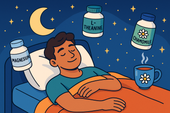
Best Natural Supplement Stack for Sleep
Discover the best natural supplement stack for deep, restorative sleep. Learn how nutrients like magnesium, L-theanine, glycine, and calming herbs such as chamomile and ashwagandha work together to relax your body, calm your mind, and improve sleep quality—naturally and safely.
-
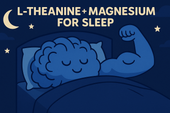
Combining L-Theanine and Magnesium for Sleep: A Calm Night, Naturally
Discover how combining L-Theanine and Magnesium can help you drift into deep, restorative sleep. Learn how this natural duo calms the mind, relaxes the body, and supports your nervous system—without grogginess the next morning.
-
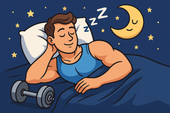
How to Sleep Better After Intense Workouts
Struggling to fall asleep after a tough workout? Learn how to optimize your post-training recovery with nutrition, hydration, and science-backed sleep strategies. Discover how to calm your nervous system, balance hormones, and wake up fully recharged for your next session.
-
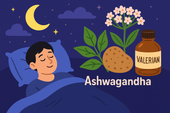
Ashwagandha and Valerian: A Bedtime Combo for Deep Rest and Emotional Reset
Discover the calming synergy of Ashwagandha and Valerian root, two natural sleep aids that help quiet the mind, ease anxiety, and promote deeper rest. Learn how this herbal duo supports the nervous system, balances stress hormones, and restores emotional peace — without next-day grogginess.
-
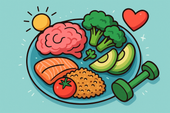
How to Create a Resilience-Boosting Diet
Discover how to build emotional and physical strength from the inside out with a resilience-boosting diet 🍎. Learn which foods stabilize your mood, how supplements like magnesium and omega-3s strengthen your stress response, and why pairing nutrition with breathwork and therapy creates lasting calm, focus, and vitality 🌿💪.
-
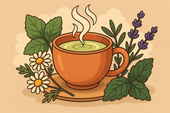
Best Teas and Herbal Blends for Calmness: Nature’s Way to Restore Inner Peace
Ashwagandha, the ancient adaptogenic herb, helps your body find balance during stress. Known as “Indian ginseng,” it supports cortisol regulation, boosts energy, and restores calm clarity. Discover how this powerful root promotes resilience, emotional balance, and steady vitality — one cup at a time. 🌸
-

Parenting and Emotional Strength: How to Raise Children Without Losing Yourself
Empathy is the bridge that connects hearts — the quiet power to understand, feel, and support another’s emotions without judgment. Learn how empathy strengthens relationships, enhances communication, and cultivates deeper compassion in everyday life. 🌿
-
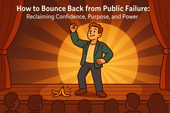
How to Bounce Back from Public Failure: Reclaiming Confidence, Purpose, and Power
Visualization is more than imagination — it’s brain training for resilience. By picturing calm, success, or healing, you activate the same neural pathways as real experience. Learn how daily visualization rewires your brain for confidence, emotional balance, and recovery from stress. ✨
-

Coping with Financial Stress Through Resilience: How to Stay Grounded When Money Feels Tight
Body awareness is the foundation of emotional resilience. By tuning into your body’s signals — tension, fatigue, or calm — you learn to recognize stress before it overwhelms you. Discover how mindfulness, gentle movement, and breathwork can deepen your connection with your body and restore balance from the inside out. 🧘
-

How to Stay Positive During Chronic Illness: A Guide to Emotional Strength and Hope
Creativity is more than art — it’s a form of healing. Whether through painting, writing, music, or small acts of expression, creativity helps release emotion, calm the nervous system, and reconnect you to joy. Discover how to use creativity as a tool for emotional balance, resilience, and self-discovery. 🌿
-
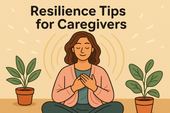
Resilience Tips for Caregivers: How to Stay Strong While Caring for Others
Joy isn’t the absence of pain — it’s the quiet strength to find light even in challenging times. Cultivating joy through small daily moments restores balance, releases stress, and reminds you of life’s beauty. Learn how to reconnect with authentic happiness, rebuild emotional energy, and nurture your nervous system through gratitude, presence, and play. 🌿
-

Building Resilience After a Breakup: How to Heal, Rebuild, and Rise Stronger
Social connection is one of the strongest predictors of emotional resilience. During difficult times, genuine relationships act as anchors — calming the nervous system, reducing stress hormones, and helping you regain perspective. Learn how cultivating real human connection can strengthen your mind, heart, and overall well-being. 🌿
-
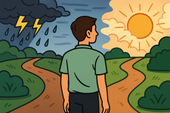
How to Stay Emotionally Strong During Job Loss
Your emotions are powered by brain chemistry — a delicate balance of neurotransmitters like serotonin, dopamine, and cortisol. When these chemicals work in harmony, you feel calm, focused, and resilient. Learn how daily habits, nutrition, and mindfulness can support your brain chemistry and boost emotional well-being naturally. 🌿
-
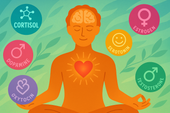
The Role of Hormones in Emotional Stability: How Your Chemistry Shapes Your Calm
Hormones shape more than your body — they shape your emotions, resilience, and sense of calm. From cortisol to serotonin, these chemical messengers influence how you react to stress, connect with others, and recover from challenges. Learn how to balance your hormones naturally to build lasting emotional stability and harmony within. 💫
-
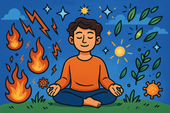
Mitochondria and Emotional Energy: The Cellular Power Behind Your Mood
Breathwork is one of the most powerful tools for emotional regulation and cellular balance. Through intentional breathing, you can calm your nervous system, increase oxygen flow to the brain, and even support mitochondrial energy. Learn how conscious breathing connects body and mind — transforming stress into presence and emotional strength. 🌿
-
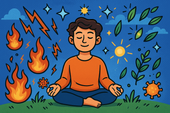
Inflammation and Its Impact on Mood Resilience: The Silent Link Between Body and Mind
Inflammation doesn’t just affect the body — it impacts the mind. Chronic inflammation alters brain chemistry, depletes serotonin, and makes emotional recovery harder. Learn how calming inflammation through nutrition, mindfulness, and sleep can restore balance, resilience, and a renewed sense of emotional strength. 💫
-
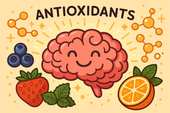
How Antioxidants Protect Emotional Well-being: The Hidden Link Between Oxidative Stress and Mental Health
Antioxidants do more than protect your body — they defend your mind. By neutralizing oxidative stress, antioxidants support serotonin, dopamine, and brain energy pathways that keep you calm, focused, and emotionally balanced. Discover how foods like berries, green tea, and dark chocolate nourish your brain, boost mood, and strengthen resilience from the inside out. 🌿✨
-
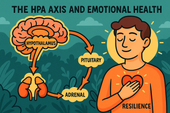
The HPA Axis and Emotional Health: The Hidden Bridge Between Stress and Mind
Neuroplasticity — the brain’s ability to rewire and adapt — is the foundation of emotional healing and resilience. When you face stress, trauma, or change, your neural pathways can reshape themselves to support new patterns of calm, focus, and self-awareness. Learn how daily practices like mindfulness, therapy, and breathwork strengthen neuroplasticity to transform emotional pain into personal growth. 🌸
-
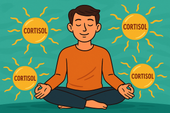
Why Cortisol Control Is Key to Resilience: Mastering Stress to Build Emotional Strength
Controlling cortisol — the body’s main stress hormone — is the secret to lasting resilience. When cortisol levels stay balanced, your mind becomes clearer, emotions steadier, and energy more sustainable. Learn how breathwork, mindset shifts, adaptogens, and daily rhythms can help you calm your stress response and build true inner strength. 🌞💪
-
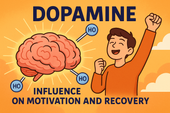
Dopamine’s Influence on Motivation and Recovery: Reigniting Drive and Balance
Healthy relationships are the foundation of emotional balance and resilience. Whether romantic, familial, or platonic, genuine connection releases dopamine, serotonin, and oxytocin — the brain’s “bonding trio” — helping us feel secure, motivated, and seen. Learn how trust, empathy, and communication not only strengthen your connections but also reshape your nervous system for deeper emotional well-being. 🌿🤝
-
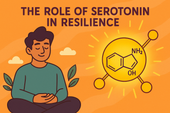
The Role of Serotonin in Resilience: How This “Mood Molecule” Shapes Emotional Strength
Serotonin — often called the “resilience molecule” — plays a vital role in how we handle stress, regulate mood, and recover from emotional challenges. Beyond happiness, this powerful neurotransmitter helps balance the gut-brain axis, stabilize the nervous system, and support emotional flexibility. Learn how nutrition, sunlight, mindfulness, and adaptogens can naturally boost serotonin and strengthen your emotional resilience. 🌞🧠
-
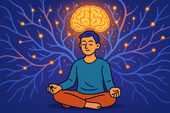
How Neuroplasticity Supports Emotional Growth: Rewiring the Brain for Resilience
Neuroplasticity is the brain’s built-in power to grow, adapt, and heal — and it’s the foundation of emotional transformation. Every mindful breath, compassionate act, or reframed thought strengthens new neural pathways that support resilience and self-awareness. Learn how your brain rewires through daily habits, helping you turn emotional challenges into opportunities for growth and calm. 🌿
-
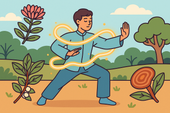
Tai Chi and Adaptogens for Mind-Body Balance: The Art of Harmonizing Energy and Resilience
Alchemy isn’t just an ancient science — it’s a timeless symbol of transformation and inner balance. By blending the physical and spiritual, alchemy teaches us that change begins from within. Just as metals are refined into gold, we too can transmute emotional pain, stress, and chaos into clarity and strength through mindful practice and self-awareness. 🌙✨
-
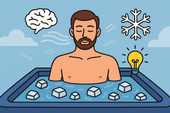
Cold Therapy and Emotional Control: Training the Mind Through the Body
Cold therapy isn’t just for athletes — it’s a tool for emotional mastery. By exposing your body to controlled cold, you train your nervous system to stay calm under stress, improving focus, mood, and resilience. This article explores the science of cold exposure, its impact on hormones and the vagus nerve, and how ice baths and cold showers can help you build emotional control, one breath at a time. 🧊🧘♂️
-

How Music Influences Emotional Recovery: The Healing Soundtrack of the Mind
Neuroplasticity — the brain’s ability to rewire and heal itself — is at the heart of emotional recovery. Through mindful habits, music, therapy, and consistent mental stimulation, your brain can form new connections that support resilience and well-being. Discover how neuroplasticity turns pain into growth, helping you rebuild balance, focus, and emotional strength. 🌿
-

Nature Therapy for Building Resilience: Reconnecting With the Healing Power of the Earth
Nature therapy helps rebuild emotional resilience by reconnecting you with the healing rhythms of the Earth. From forest walks to sunlight exposure, nature restores balance to your nervous system, lowers stress hormones, and teaches emotional adaptability. Learn how spending time outdoors can enhance mental clarity, calm anxiety, and awaken your natural capacity to heal. 🌞
-
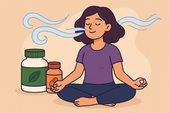
Breathwork Techniques That Pair with Supplements: The Ultimate Synergy for Stress Relief and Mental Clarity
Breathwork and supplements create a powerful mind-body synergy for stress relief, focus, and energy. By combining intentional breathing with adaptogens, nootropics, and calming nutrients, you can naturally regulate cortisol, sharpen mental clarity, and boost emotional balance. This guide explores the best breathwork techniques and supplement pairings to help you feel centered, calm, and energized from the inside out. 🌿
-
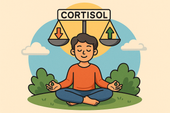
Why Cortisol Balance Matters for Emotional Strength
Balancing cortisol — your body’s main stress hormone — is essential for emotional resilience. When cortisol is chronically high, your mind stays stuck in survival mode, leading to fatigue, anxiety, and emotional instability. This article explores how nutrition, supplements, breathwork, and therapy can help restore healthy cortisol rhythms, regulate the nervous system, and strengthen your ability to handle life’s challenges with calm focus and emotional strength. 🌿
-
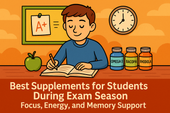
Best Supplements for Students During Exam Season: Focus, Energy, and Memory Support
Studying late into the night? Learn which natural supplements can boost focus, memory, and mental stamina during exam season — without the crash. From omega-3s to Bacopa and Rhodiola, discover your brain’s ultimate exam support stack. 🎓🧠
-
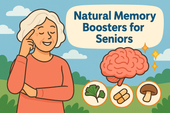
Natural Memory Boosters for Seniors: How to Keep Your Mind Sharp and Focused
Stay mentally sharp and confident as you age. Discover science-backed natural supplements and lifestyle habits that boost memory, focus, and brain longevity for seniors. 🌿🧠
-
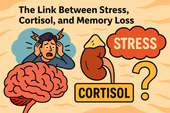
The Link Between Stress, Cortisol, and Memory Loss
Chronic stress can quietly erode your memory — and cortisol is the key culprit. Learn how stress hormones affect the brain, why the hippocampus shrinks under pressure, and how natural strategies can help you restore memory and mental clarity. 🧠✨
-
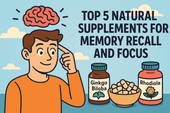
How to Build a Daily Supplement Routine for Memory Health
Want to sharpen your memory and stay mentally clear? Learn how to build a daily supplement routine for memory health — from morning focus to nighttime brain repair. Discover science-backed nutrients that boost recall, focus, and long-term cognitive resilience. 🧠🌿
-
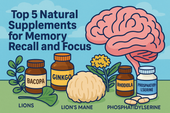
Top 5 Natural Supplements for Memory Recall and Focus
Looking to boost memory and concentration naturally? Discover the top 5 supplements — Bacopa, Ginkgo Biloba, Lion’s Mane, Rhodiola, and Phosphatidylserine — that enhance focus, recall, and long-term brain health. 🧠✨
-
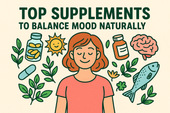
Top Supplements to Balance Mood Naturally
From omega-3s to adaptogens, discover the top natural supplements proven to support emotional balance, reduce stress, and promote inner calm — safely and effectively. 🌿✨
-
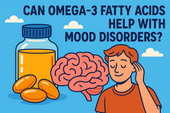
Can Omega-3 Fatty Acids Help with Mood Disorders?
Omega-3 fatty acids do more than support heart health — they can help balance mood, reduce depression, and calm anxiety. Discover how EPA and DHA nourish your brain, fight inflammation, and support emotional well-being from within. 🌊🧠
-

Vitamin D and Mood: The Sunshine Vitamin for Emotional Balance
Could the key to emotional balance be as simple as a little sunlight? Discover how vitamin D — the sunshine vitamin — influences serotonin, reduces inflammation, and helps you feel more positive and resilient year-round. ☀️💛
-

The Role of Magnesium in Reducing Irritability and Low Mood
Feeling on edge or emotionally drained? Magnesium could be the missing link between your body and your mood. Discover how this essential mineral reduces irritability, balances neurotransmitters, and helps your nervous system find calm again. 🌿✨
-
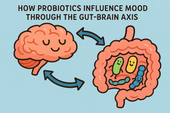
How Probiotics Influence Mood Through the Gut-Brain Axis
Discover how probiotics can do more than support your digestion—they can actually uplift your mood. This article explores the fascinating gut-brain axis and how balancing your gut bacteria through probiotics may help reduce anxiety, improve emotional stability, and support long-term mental well-being. 🌿🧠
-
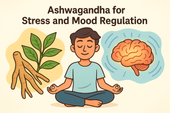
Ashwagandha for Stress and Mood Regulation
Discover how Ashwagandha, the powerful adaptogenic herb 🌿, helps your body manage stress and regulate mood. Learn how it balances cortisol, boosts GABA and serotonin, and supports emotional stability — helping you feel calm, focused, and resilient every day.
-
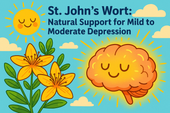
St. John’s Wort: Natural Support for Mild to Moderate Depression
Discover how St. John’s Wort, the “sunshine herb” 🌼, naturally supports mild to moderate depression. Learn how it boosts serotonin, balances mood, and promotes emotional resilience — with research showing its effectiveness compares to antidepressants, but with fewer side effects.
-
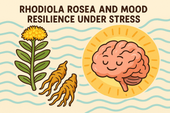
Rhodiola Rosea and Mood Resilience Under Stress
Discover how Rhodiola rosea helps your body adapt to stress 🌿. Learn how this powerful adaptogen balances cortisol, supports serotonin and dopamine, and strengthens emotional resilience — helping you stay calm, focused, and energized under pressure.
-
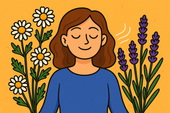
Chamomile and Lavender: Herbal Calm for Emotional Fluctuations
Discover how chamomile and lavender bring calm to emotional ups and downs 🌿. Learn how these two soothing herbs balance your nervous system, ease anxiety, and support restful sleep — naturally helping you find peace and emotional stability.
-
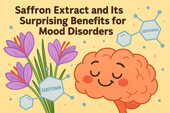
Saffron Extract and Its Surprising Benefits for Mood Disorders
Discover how saffron extract — the golden spice of joy 🌸 — can naturally support mood balance, ease anxiety, and lift mild depression. Learn what science says about its serotonin-boosting power, the ideal dosage, and how this ancient remedy compares to modern antidepressants.
-
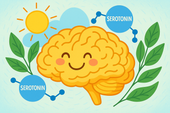
5-HTP and Serotonin: A Natural Path to Lifting Mood
Discover how 5-HTP naturally boosts serotonin 🌞 — the neurotransmitter behind mood, sleep, and emotional balance. Learn how this plant-derived compound supports happiness, reduces anxiety, and improves rest by helping your brain create more serotonin the gentle, natural way.
-
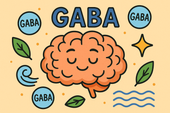
GABA Supplements for Reducing Anxiety and Mood Swings
Discover how GABA supplements can help reduce anxiety and balance mood naturally 🌿. Learn how this calming neurotransmitter works to quiet the mind, ease stress, and improve sleep — plus which nutrients and habits can boost your body’s own GABA production for long-term emotional stability.
-
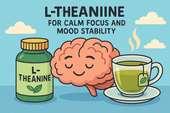
L-Theanine for Calm Focus and Mood Stability
Discover how L-theanine, the calming compound found in green tea 🍵, promotes focus, relaxation, and mood stability. Learn the science behind how it balances neurotransmitters, reduces stress hormones, and enhances clarity — helping you stay centered, calm, and productive without sedation.
-
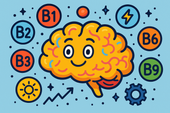
B Vitamins and Brain Chemistry: Supporting Energy and Emotional Balance
Discover how B vitamins power your brain chemistry ⚡. Learn how B6, B9, and B12 support serotonin, dopamine, and energy production — helping boost focus, mood, and emotional balance. From diet to supplements, explore how this vital nutrient group keeps your mind resilient and your energy steady.
-

N-Acetyl Cysteine (NAC) and Mood Disorders: What the Research Says
Learn how N-Acetyl Cysteine (NAC) supports brain health and mood balance 🧠. Discover how this antioxidant helps reduce oxidative stress, regulate glutamate, and improve emotional stability in depression, bipolar disorder, and anxiety — backed by cutting-edge psychiatric research.
-

Supplements for Bipolar Disorder: What May Support Stability
Discover the best supplements for bipolar disorder 🌿 that may support emotional stability and brain health. Learn how nutrients like omega-3s, magnesium, vitamin D, and NAC can help reduce inflammation, balance neurotransmitters, and complement traditional treatment safely.

















































